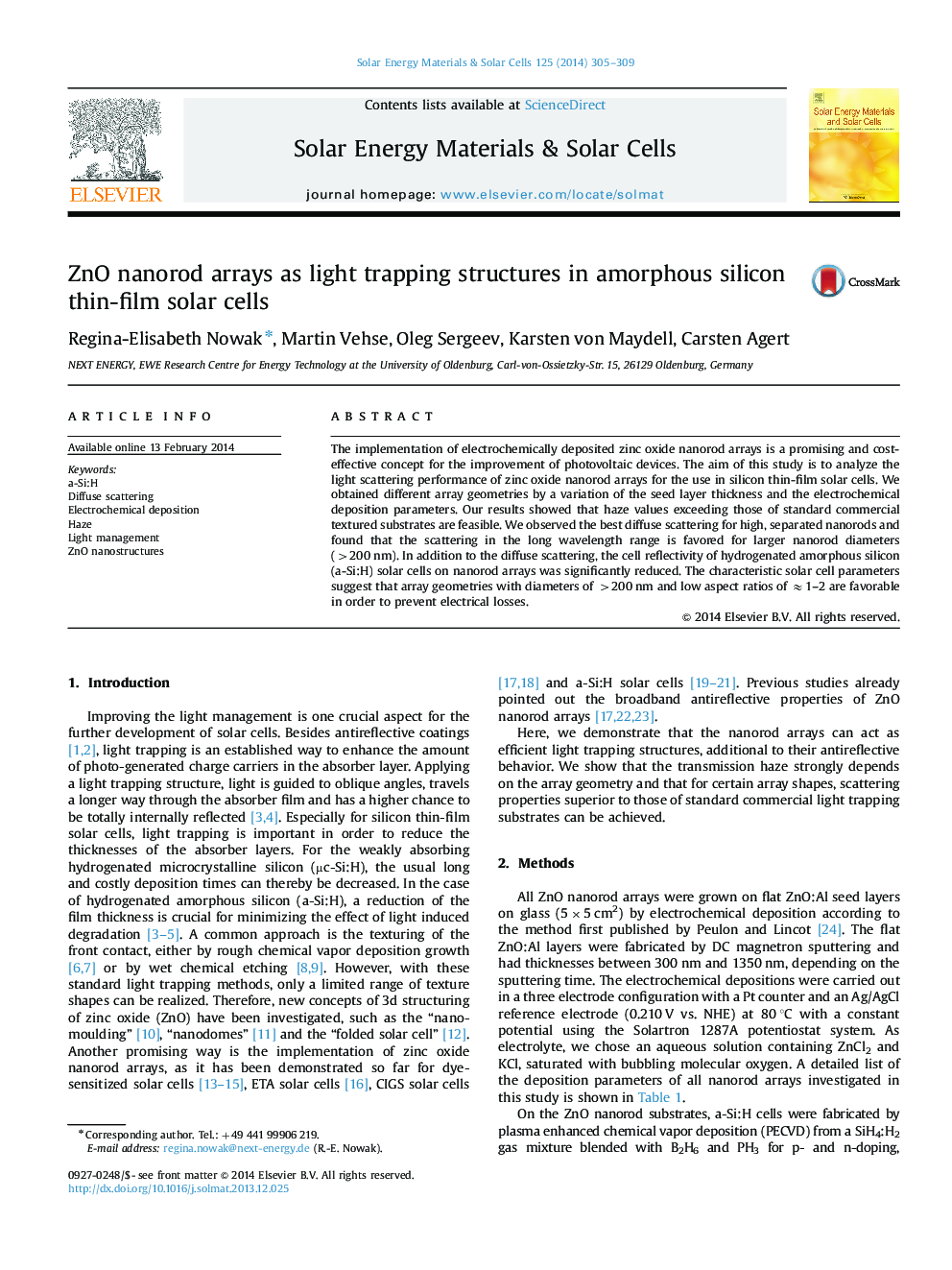| کد مقاله | کد نشریه | سال انتشار | مقاله انگلیسی | نسخه تمام متن |
|---|---|---|---|---|
| 78117 | 49316 | 2014 | 5 صفحه PDF | دانلود رایگان |

• Electrochemical deposition as a cost-effective method to grow ZnO nanorods.
• Improved light management in thin-film solar cells with ZnO nanorod arrays.
• Remarkably high haze values possible for ZnO nanorod substrates.
• Trade-off between diffuse light scattering and electrical losses in the solar cell.
• Stronger light scattering at longer wavelengths for larger nanorod diameters.
The implementation of electrochemically deposited zinc oxide nanorod arrays is a promising and cost-effective concept for the improvement of photovoltaic devices. The aim of this study is to analyze the light scattering performance of zinc oxide nanorod arrays for the use in silicon thin-film solar cells. We obtained different array geometries by a variation of the seed layer thickness and the electrochemical deposition parameters. Our results showed that haze values exceeding those of standard commercial textured substrates are feasible. We observed the best diffuse scattering for high, separated nanorods and found that the scattering in the long wavelength range is favored for larger nanorod diameters (>200 nm). In addition to the diffuse scattering, the cell reflectivity of hydrogenated amorphous silicon (a-Si:H) solar cells on nanorod arrays was significantly reduced. The characteristic solar cell parameters suggest that array geometries with diameters of >200 nm and low aspect ratios of ≈1–2 are favorable in order to prevent electrical losses.
Graphical AbstractFigure optionsDownload as PowerPoint slide
Journal: Solar Energy Materials and Solar Cells - Volume 125, June 2014, Pages 305–309